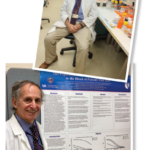Although the reality of the Peltzman Effect can be debated, the relevance to drug safety is very clear. Any drug that comes to market carries risks and incredible unknowns, both in the short term and long term. A product approved by the Food and Drug Administration has undergone reasonable scrutiny, but the sample size of most phase 3 clinical trials is actually quite small. A trial of 2,000 people (or even 20,000 people) can tell, at best, an incomplete story. The more a drug is used, the more its risks will become apparent. If a drug is used too cavalierly, the Peltzman Effect says that the risks may quickly outweigh the benefits.
Complicating any assessment of safety from a clinical trial is the exclusion of patients because of age or comorbidities. Furthermore, a small trial is unlikely to detect a small increase in a common event (e.g., myocardial infarction or stroke). If the product is intended for high-risk patients (e.g., the elderly) and may be used by millions of people when it comes to market, that small percentage increase can become a large absolute number.
Witness what happened with Vioxx (rofecoxib), a coxib thought to be safer because it was less likely to disturb the gastrointestinal tract. Perhaps more than any drug, Vioxx is the poster child for the Peltzman Effect. It became so because our guard was down and we focused on what the endoscope and not the angiogram showed.
Of all the rules, the one which I think is the most important (and to which I fervently want my name attached in eternity) is this one: A drug becomes dangerous the moment that you think it is safe.
Weighing Drug Safety in Rheumatology
Rheumatologists should be especially concerned about drug safety because our specialty deals with common conditions, many of which primarily affect older people. Although these are serious and debilitating diseases, they do not usually cause direct mortality. Diseases such as rheumatoid arthritis (RA) can shorten the life span, but decades of active disease may be required before that survival effect is manifest. Thus, drugs for the common forms of arthritis must be very safe. Indeed, for a long time, rheumatology was a leader among specialties in having its drugs pulled from the market.
Our field has been very lucky in that the major new drugs introduced into the armamentarium—most notably, the biologicals to treat RA—have had a favorable balance of risks and benefits. The Peltzman Effect warns, however, that prudence and vigilance remain essential in the use of these agents and that, with the passage of time, we should become perhaps more, not less concerned, about the danger lurking in the medicine chest (or in the refrigerator in the case of biological products).


